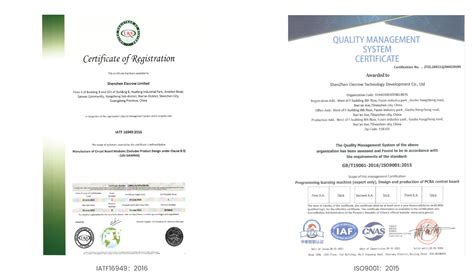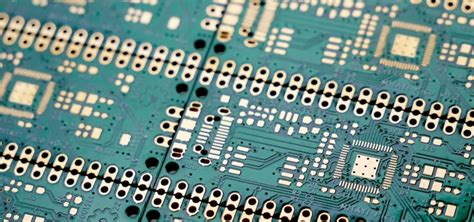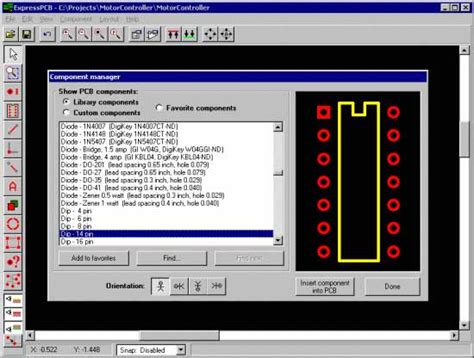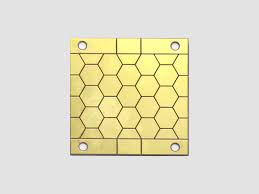Affordable Solutions for Efficient PCB Assembly Services

Key Takeaways
In exploring pcb assembly options, it becomes essential to focus on both cost and quality to ensure successful outcomes. Understanding the fundamentals of pcba is the first step; this involves recognizing that efficient pcb assembly requires more than just economic choices. Implementing effective strategies for reducing costs can lead to significant savings, but these must not compromise the integrity of the final product. Evaluating quality in a cost-effective manner means scrutinizing potential providers for their reliability and consistency in delivering high-quality assemblies. Moreover, it’s crucial to consider the speed of production, as delays can impact project timelines and budgets. By focusing on both speed and efficiency, businesses can ensure that their projects remain on track while maintaining a budget-friendly approach to pcb assembly services. The key lies in finding that delicate balance between affordability and quality, allowing for improved project outcomes without jeopardizing financial resources. Thus, leveraging affordable solutions while emphasizing quality and speed is paramount in achieving successful pcba projects without stretching funding too thin.
Understanding PCB Assembly: The Basics
PCB assembly, or PCBA, is a crucial step in the process of bringing electronic devices to life. It involves the integration of various components onto a printed circuit board (PCB) to create functional electronic circuits. Understanding the basic aspects of PCB assembly is essential for anyone looking to navigate the electronics manufacturing landscape. This process begins with design, where an engineer creates a schematic that outlines how components should be connected. Following this, the actual assembly involves several key stages: solder paste application, component placement, and soldering — either through reflow or wave soldering methods.
It’s important to note that throughout each phase, maintaining quality is vital. As projects often prioritize budgets, one might feel tempted to opt for cheaper alternatives during PCBA. However, cost savings should not come at the expense of quality and reliability. “Investing in quality PCB assembly services ultimately saves money by preventing costly defects and ensuring longevity,” advises industry experts. Therefore, when seeking affordable solutions, look for services that blend cost-effectiveness with superior quality standards.
An understanding of these basics allows manufacturers and engineers alike to appreciate how various factors such as component selection and assembly techniques influence overall costs without sacrificing efficiency. In summary, a solid grasp of PCB assembly fundamentals paves the way for smarter decisions when selecting budget-friendly options that align with specific project needs while ensuring adherence to quality benchmarks.

Strategies for Reducing PCB Assembly Costs
Reducing costs in PCB assembly or PCBA processes can significantly impact the overall budget and success of a project. To strike a balance between maintaining quality and minimizing expenses, consider the following strategies:
Optimize Component Selection: Choosing cost-effective components can lead to substantial savings. Explore alternatives that provide similar performance but at a lower price point.
Batch Production: Rather than assembling a small number of units, consolidating production runs for larger quantities can reduce the per-unit cost. This approach benefits from economies of scale, making production more efficient.
Design for Manufacturability (DFM): Incorporating DFM principles into your design phase can lower assembly costs by simplifying the manufacturing process. Fewer complex features mean reduced labor time and material waste.
Leverage Offshore Assembly Services: While keeping quality in mind, consider using offshore services that offer competitive pricing without compromising standards. Thorough vetting is crucial to ensure reliable partnerships.
Invest in Automation: Implementing automated assembly processes can reduce labor costs and improve consistency in assembly quality. Automation not only speeds up production but also diminishes the likelihood of human error.
Here is a table summarizing these strategies:
| Strategy | Description | Benefits |
|---|---|---|
| Optimize Component Selection | Choose affordable yet effective alternatives | Cost savings without compromising quality |
| Batch Production | Produce in larger quantities | Economies of scale |
| Design for Manufacturability | Simplify designs for easier assembly | Reduced labor time and less waste |
| Offshore Assembly Services | Use international services to lower costs | Competitive pricing |
| Invest in Automation | Incorporate machinery to enhance productivity | Consistency and reduced errors |
By employing these strategies, companies can achieve cost-effective solutions within their PCB assembly projects, ensuring they remain competitive while upholding quality standards essential for reliable electronic products.
Evaluating Quality in Cost-Effective PCB Assembly
When it comes to PCB assembly, particularly in the quest for affordable solutions, evaluating the quality of service becomes paramount. A careful assessment ensures that while minimizing costs, the integrity and functionality of the PCBA are maintained. It is essential to look beyond just the pricing and consider several key factors that contribute to quality. First, verify the credentials and experience of the assembly provider. This includes examining certifications such as ISO standards, which can reflect a dedication to maintaining high-quality production practices despite lower costs. Second, focusing on materials used during the pcb assembly process is crucial; lower-cost components can sometimes compromise overall performance and reliability. Additionally, effective communication with your service provider can lead to better results; clear specifications should be provided to maintain expectations throughout the assembly process. Finally, implementing rapid prototyping methods can incorporate quality checks at various stages of production, further safeguarding your project against potential pitfalls associated with cutting costs. By prioritizing these elements, you can successfully navigate the landscape of budget-friendly PCB assembly services while ensuring that quality is not sacrificed along the way.
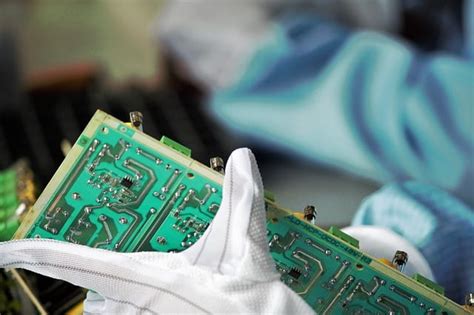
The Importance of Speed in Efficient PCB Assembly
In the realm of pcb assembly, the significance of speed cannot be overstated. Efficient pcba processes directly impact project timelines and overall productivity. A fast turnaround not only helps meet stringent deadlines but also enhances a company’s reputation for reliability. In today’s competitive market, where innovation and rapid deployment are pivotal, delays in pcb assembly can lead to lost opportunities and increased costs. By streamlining the assembly process, companies can ensure that their products reach the market more quickly, allowing them to capitalize on emerging trends before competitors. Furthermore, prioritizing speed does not mean compromising on quality; rather, it emphasizes the need to balance rapid production with effective quality control measures. Embracing advanced technologies and optimizing workflows are essential for achieving notable improvements in both speed and efficiency, ultimately resulting in a smoother operation that satisfies client demands while keeping expenditures reasonable. Thus, investing in strategies that enhance the speed of pcb assembly should be a core focus for those looking to maintain a competitive edge in their industry.
Top Budget-Friendly PCB Assembly Services to Consider
When exploring budget-friendly PCB assembly options, it’s crucial to identify services that offer a balance between cost and quality. Many manufacturers now focus on providing competitive rates without compromising on the integrity of the PCB assembly process. Some notable services that stand out in this category include companies that leverage automation and streamlined logistics, which can lead to significant savings for clients. These suppliers often employ advanced techniques in PCBA, which can reduce labor costs while ensuring precision. Additionally, choosing local suppliers can minimize shipping expenses and lead times, enhancing the overall efficiency of your projects. It is essential to assess each service’s reputation and past performance through customer reviews and case studies to ensure that you select a partner that meets your needs in terms of quality control and speed. By adopting a strategic approach to choosing your assembly service, you can keep your projects aligned with budget constraints while still achieving superior results in your pcb assembly endeavors.
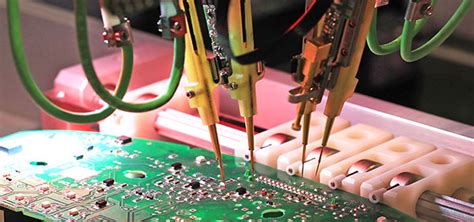
Case Studies: Successful Projects with Cheap PCB Assembly
In today’s fast-paced technological landscape, many companies have turned to cheap PCB assembly services to manage costs while maintaining quality. A notable example is a tech startup that required a rapid prototype of a new electronic device. By collaborating with a budget-friendly PCBA partner, they achieved an impressive turnaround time of just two weeks without sacrificing the integrity of their design. This case illustrates how choosing cost-effective solutions can fuel innovation, as the startup was able to launch their product on schedule, capture market interest, and secure additional funding for future projects.
Another case involves an established manufacturer that needed to optimize their supply chain. They sought affordable PCB assembly services while ensuring that the components were sourced from reputable suppliers. By adopting lean manufacturing principles alongside these low-cost assembly options, they experienced a 30% reduction in operational costs and improved production efficiency. This success story highlights how investing in quality while prioritizing cost can yield remarkable outcomes in both financial performance and project delivery timelines.
As seen through these examples, successful projects involving cheap PCB assembly stem from strategic partnerships that align with both budgetary constraints and quality benchmarks. Companies are reaping the benefits of lower costs while ensuring that their projects remain on track, emphasizing the importance of thorough research when selecting an assembly service provider. The ability to deliver reliable solutions at competitive prices is not just advantageous but essential in maintaining a competitive edge in an ever-evolving market landscape.
Common Pitfalls to Avoid in Low-Cost PCB Assembly
When opting for cheap PCB assembly services, it’s crucial to be aware of potential pitfalls that can hinder the success of your project. One major concern is compromised quality. In the rush to reduce costs, some manufacturers may cut corners, resulting in subpar PCBA that can lead to failures and increased long-term expenses. Another common issue is the lack of proper communication and support throughout the assembly process. Choosing a supplier based solely on price can often mean inadequate customer service, making it difficult to address any issues that arise. Furthermore, neglecting thorough testing procedures during PCB assembly can lead to undetected errors, ultimately impacting product reliability. It’s also vital to verify the capabilities of a low-cost vendor; without proper certifications or experience in handling your specific requirements, you might face delays or even dissatisfaction with the final product. Always remember that while affordability is important, it should never overshadow the essential factors of quality and reliability in your PCBA project. Being mindful of these pitfalls will help you select a truly cost-effective solution and contribute positively to the overall success of your electronic endeavors.
Future Trends in Affordable PCB Manufacturing Solutions
As the demand for pcb assembly continues to rise, the industry is witnessing a shift towards more innovative and cost-effective approaches. One of the most significant trends is the integration of advanced automation technologies in pcba processes. This transition not only enhances productivity but also results in improved precision, which is crucial for maintaining high standards of quality without inflating costs. Additionally, many companies are exploring smart manufacturing techniques, which leverage data analytics and IoT (Internet of Things) to streamline operations and optimize assembly workflows.
Moreover, with the increasing emphasis on sustainability, many manufacturers are adopting eco-friendly materials and processes. This commitment not only helps reduce operational costs but also appeals to environmentally conscious consumers. There’s also a noticeable trend towards collaborative partnerships between manufacturers and design engineers, facilitating a smoother transition from prototype to production. By involving key stakeholders early in the pcb assembly process, companies can better anticipate challenges and implement effective solutions that keep projects on schedule while adhering to budget constraints.
Furthermore, as remote work becomes more prevalent, there are emerging platforms that allow companies to manage pcba projects from anywhere. This flexibility can lead to significant reductions in overhead costs while maintaining quality standards. In conclusion, the future of affordable PCB manufacturing looks promising as it embraces technology, sustainability, and collaboration—all essential elements for thriving in a competitive landscape while keeping costs manageable.
Conclusion
In conclusion, navigating the landscape of pcb assembly services can be a complex endeavor, especially when aiming for cost-effectiveness without compromising quality. As illustrated throughout the article, there are numerous strategies to reduce expenses while ensuring that your pcba meets industry standards. From prioritizing speed and efficiency in the assembly process to evaluating various budget-friendly services, you can find solutions that keep your projects on schedule. Understanding potential pitfalls in low-cost pcb assembly is equally crucial; being aware of common errors can help you avoid setbacks that may arise from insufficient quality checks. As the industry evolves, staying informed about emerging trends in affordable pcb manufacturing will further enhance your ability to make sound decisions for future projects. Therefore, the key takeaway is to balance affordability with quality and efficiency, ensuring that you achieve optimal results in your next pcb assembly endeavor.
FAQs
What is PCB assembly?
PCB assembly, often abbreviated as PCBA, is the process of populating an electronic circuit board with components and making the necessary electrical connections. This process is crucial for the functionality of any electronic device.
How can I reduce costs while maintaining quality in PCB assembly?
To lower the costs of PCB assembly, consider sourcing components in bulk, utilizing automated assembly techniques, and choosing a reliable manufacturer that specializes in cost-effective solutions without compromising on quality.
What should I look for in a budget-friendly PCB assembly service?
When evaluating budget-friendly PCB assembly services, prioritize their track record in delivering robust quality, adherence to timelines, and customer reviews to ensure you select a provider that offers value for money.
Are there risks associated with cheap PCB assembly services?
Yes, while opting for low-cost PCBA services can save money initially, it may lead to potential risks such as inferior component quality and longer turnaround times. Always investigate the manufacturer’s credentials and past performance before proceeding.
How does speed affect PCB assembly?
Speed plays a vital role in efficient PCB assembly, as quicker turnaround times can help meet project deadlines. A fast yet reliable service ensures that your projects are completed on time without sacrificing quality.

